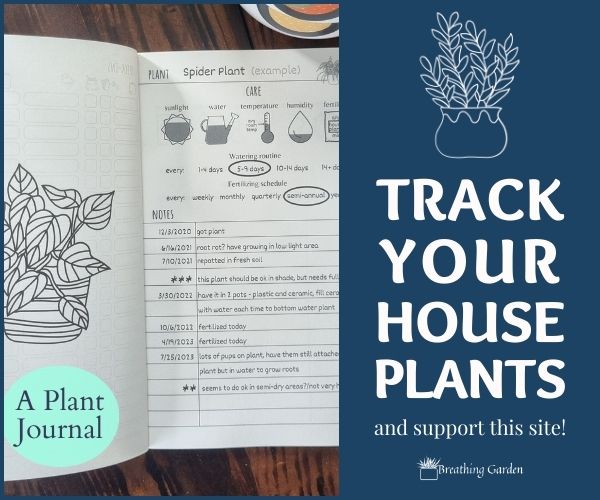Monstera plants are one of the most popular indoor house plants right now. It’s not hard to see why they’re a favorite. But having one of these popular plants means you have to know how to care for them! And it can be easy to accidentally have an overwatered Monstera.
*This post may include affiliate links. When you purchase items from these links, we will receive a small commission, at no extra cost to you, to help support this website. Thank you for your support! Read more ->
I love my Monstera plant, with it’s big leaves that have holes in them. And watching the leaves unfurl is one of the highlights of having this plant. It’s definitely a statement plant for any room.
But watering your Monstera plants can be tricky! It’s really easy to overwater or underwater your plant.
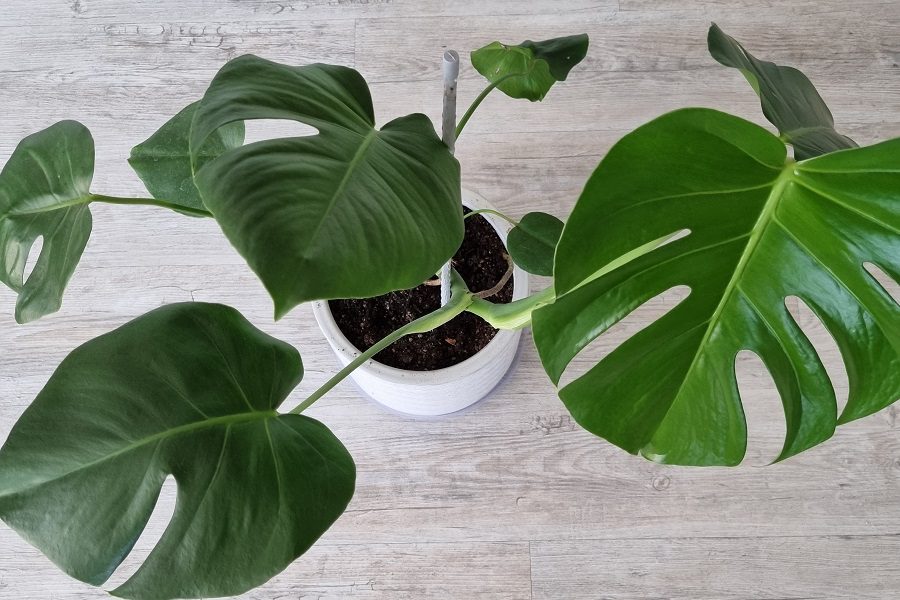
At A Glance
Monstera plants are not unlike other plants that can be overwatered or underwatered. There are easy signs to look for to determine if your Monstera has been overwatered, like yellowing and browning leaves, and soggy soil.
One of the easiest ways to fix this problem is to repot your Swiss Cheese plant with fresh soil.
Signs of an Overwatered Monstera
Monstera plants have similar problems when overwatered like other plants do.
There are a few ways you can tell if your Monstera has had too much water – look at the leaves and soil.
Yellow Leaves Overwatered vs Underwatered
If your Monstera plants have yellow leaves, it’s a sign of problems with watering. While yellowing can be a sign of an underwatered Monstera as well as overwatered Monstera plant, it’s easy to find out which is the problem.
If the leaves are yellow with brown spots on them and look almost soggy, it’s a sign of being overwatered. If the edges of leaves are drying and browning, that’s the Monstera underwatered.
This is a very distinct yellow color, not just a light green like new leaves. It’s caused by the plant not being able to obtain nutrients.
The yellow color can also appear on the stems of the leaves, not just the leaves themselves when it’s underwatered.
Brown Spots
Brown spots on the leaves are another sign of your swiss cheese plant being overwatered. These will be in the middle of the leaf, and likely accompany the yellow leaves. This is where the leaves are dying from lack of nutrients.
Waterlogged Soil
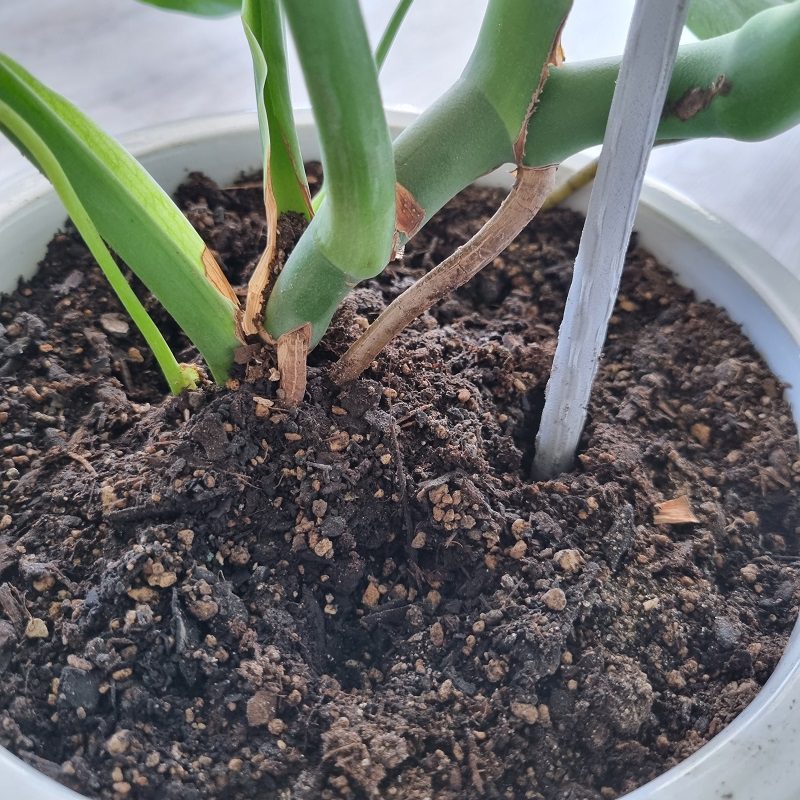
Another way to tell if your Monstera plant is overwatered is if the soil feels soggy. You can test if you’ve got soggy soil by sticking a finger in and seeing how the soil feels! You want the soil to be moist after watering, but still feeling just as wet 3 weeks later.
If you’ve overwatered, the soil may feel like cake mix before it’s been cooked. It can almost feel like a sponge or sound like a sponge if there’s too much water.
Having too wet soil can lead to root rot, which is really dangerous for your plant’s health.
Moss/Mold Growth
Another thing to look at for a really easy sign of overwatering is if there’s growth on top of the soil. If there’s mold or moss on the soil, that’s a sure sign that your plant has too much water in its soil.
So now that we’ve looked at signs of an overwatered Monstera plant, let’s look at how you can save your plant!
Healing Your Monstera Plant
Now that you’ve identified that your Monstera plant is overwatered, it’s time to bring it back to life with a healthy root system and start having healthy growth again.
Changing the Soil & Possibly Choosing a New Pot
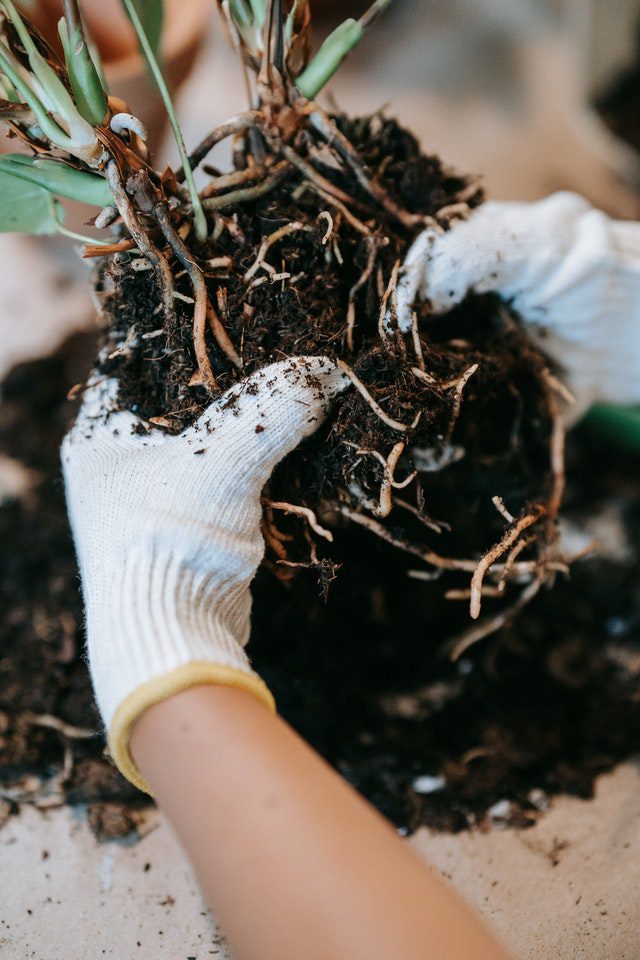
One of the quickest ways to get rid of excess water in the soil, is to change out the soil and put your Swiss Cheese plants in a new pot.
You only need the new pot if you think that could have been part of the problem before. Make sure you’re using one with a drainage hole so excess water can leave the soil, and maybe choose a terracotta pot. This type of pot is good because moisture can also leave the sides, rather than just the bottom.
Make sure you’re not using too big of a pot either, as this can also lead to excess moisture.
When changing out the soil, first remove as much of the soggy soil as you can. Check the roots and see if you’ve got any root rot. Healthy roots will be brown and thick. Rotten roots will be soft and will likely fall off the plant. Remove these affected roots before you move the plant over.
Choose a potting soil that’s made for indoor plants, that’s well draining. Start filling the pot with dry soil. DO NOT dampen the soil at all. Move your Monstera plant over, and fill the pot the rest of the way up with your potting mix (with about a 1 inch gap from the top so when you do water it, it won’t overflow.
Once you’ve moved your replanted Monstera, let it sit for at least a week or two in the dry soil before watering.
Keep reading about how to repot a monstera
Future Care For Your Monstera
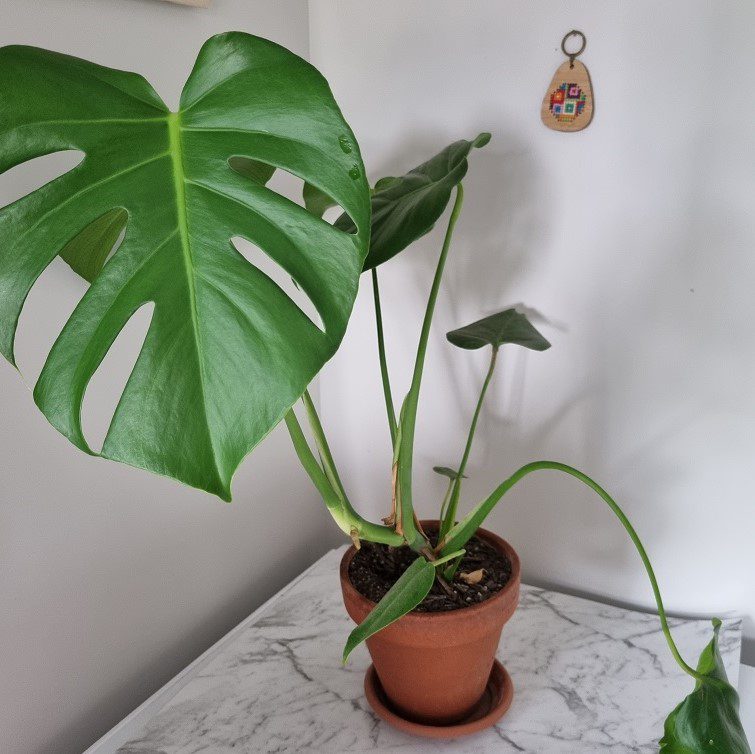
Once you’ve got your Monstera plant back to healthy, there are a few things you can do to make sure it stays healthy!
Regular Watering
Check if it needs water weekly. You definitely don’t have to water your Monstera weekly, but test with a finger if the soil is still damp. You’ll want to reduce your watering frequency during the cooler months than the hotter months.
If the soil is completely dry to the touch, then it’s time to water. Personally, I think bottom watering worked better for my Monstera plant, but that only works with smaller pots that are easy to move.
For top watering, depending on the size of pot and plant, you most likely won’t want to water until the soil goes through the drainage holes. This is different from many other plants, but these plants don’t need quite as much water as most.
Light Needs
Keep your Monstera plant in a place with enough light for it. Give it a place that gets bright, but indirect sunlight. This plant’s natural habitat is in a forest under the cover a tree canopy, with only filtered light coming through.
Now hopefully you’ve got a healthy and happy plant again! Just make sure to only water when the soil is dry.



